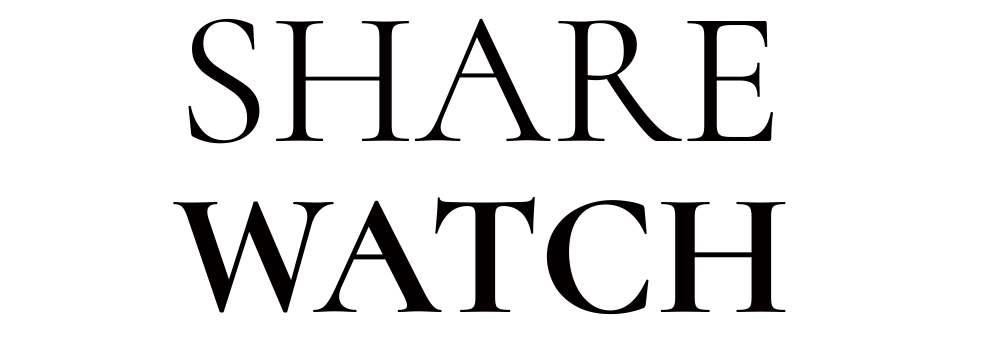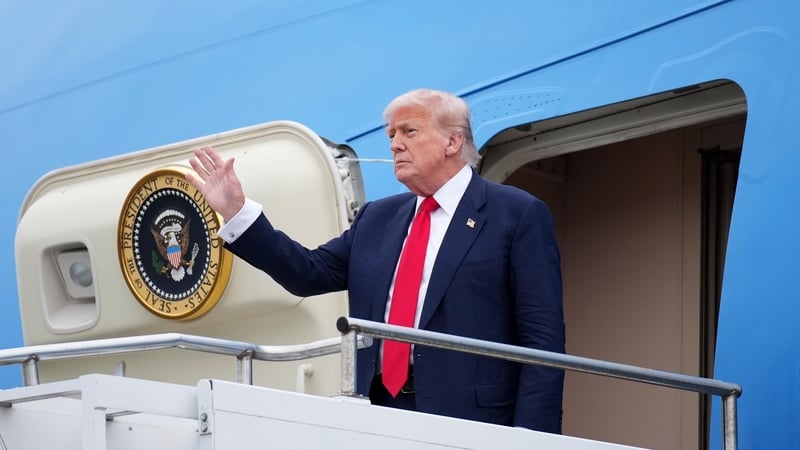It was Ursula von der Leyen’s late afternoon social media post that confirmed a deal is on.
All the hard work has been done by trade negotiators. But US President Donald Trump likes to seal the deal himself with a high-level figure – that is why his own press office likes to call him “the closer”.
Of course it is not done until it is done. But there is no way Ms von der Leyen is getting on a plane tomorrow morning in hope.
There is a deal to be sealed – though she will probably have to sweeten it a little in the end to get the closer to close.
During the week, he personally closed deals with the prime ministers of Indonesia and the Philippines (Ferdinand Marcos Junior) and with Japan’s senior trade negotiator (Prime Minister Ishiba’s LDP party had lost its parliamentary majority in elections last Sunday, and he is expected to resign).
Taoiseach Micheál Martin is hopeful the deal can be signed – though he says it will be an outline deal, leaving much detail to be filled in later.
But it should give some certainty to businesses to enable them to get on with planning.
The US President will meet UK Prime Minister Keir Starmer to “flesh out” the outline deal he made with the British in May.
The headline in that is a 10% tariff on British imports to the US.
Mr Trump was certainly talking up prospects of an EU deal as he left the White House yesterday.
“I would say that we have a 50:50 chance of making a deal with the EU, and it will be a deal where they have to buy down their tariffs, because they are right now at 30% and they’ll have to buy them down maybe, or they could leave them the way they are,” Mr Trump said.
“But they want to make a deal very badly. I would have said we have a 25% chance with Japan. And they kept coming back, and we made a deal.”

“The biggest part of the Japan deal, and maybe we get this with the EU, maybe we don’t, is that we have the right to go in and trade. We have the right – they’ve totally opened Japan to the US,” he added.
Note the phrase “buy down their tariffs”.
What is Europe offering the US that Mr Trump thinks is worth reducing the tariff rate from 30% to 15%?
Big purchase agreement on energy expected
Part of the deal is expected to be a big purchase agreement on energy. The day after the presidential election last November, Ms von der Leyen offered to negotiate a massive gas contract with America, knowing that Mr Trump was coming gunning for the EU on trade.
That deal, she said, could more or less close the annual trade gap between the EU and US.
And besides a new gas supplier was needed, after Russia put itself beyond the pale by invading Ukraine.
This will be Liquified Natural Gas (LNG), which is why the Irish Government has stamped on the accelerator of getting a long talked about LNG terminal built in Limerick. The gas plays into Mr Trump’s campaign rhetoric of “drill baby drill” and energy dominance.
But there will be many more elements, as even a deal to supply 450 million Europeans with gas will not be big enough.
Mr Trump complains a lot about market access, particularly in relation to cars and food.
In general the EU market is very open to US products and services. Look around your own home, shops, businesses – what American stuff do you not have? (genuine, made in USA stuff, not made in China with US marketing hype).
Mr Trump is wrong about the car market being closed to US producers – Ford dominates the light commercial market on both sides of the Atlantic, while in left-hand drive mainland Europe, pretty much any American car is available to consumers – if they can afford the running costs.
It is not the huge bulk of the vehicles that is the chief problem (though it is a problem).
It is the huge cost of feeding the massive and inefficient engines they use.
Read more: Trump says EU-US tariff deal will be ‘biggest of all’ if agreed
On food, there is a bigger problem, and it is the extra chemicals and hormones that go into the US food chain that are banned in Europe (a ban strongly supported by consumers).
Mr Trump’s own Health Secretary, Robert F Kennedy Jr frequently mentions the thousand food ingredients that are banned in Europe but allowed in the US as a bad thing – for the US consumer and the health of the nation.
His mission statement is MAHA – Make America Healthy Again, and he is trying to ban or force the discontinuance of these additives.
Europe has quota for US beef without growth hormones
Europe does have a quota for US beef – but only if it has been grown without artificial growth hormones. Chicken is washed in chlorine in the US, to kill off health threatening bacteria.
The practice is banned in Europe, but the EU has a higher rate of food poisoning from chicken. In trade talks in 2012, Eurocrats said they had an alternative method that would satisfy both EU and US health norms, but those talks went nowhere.
Critics of the US use of chlorine washing say it covers up lower animal welfare standards. None of this is likely to feature in talks in Scotland.
But yesterday there was an unexpected development when Australia announced it would take imports of US beef.
It has been quite a closed, protected market – but producers there also doubted the US could supply much beef to Australia anyway, as its own beef industry, they claimed, could not satisfy local demand for beef and needed to import.
But Irish and French farmers will be wary of any agricultural sweeteners in this deal.
Defence is another element in the trade balance between the EU and US.
The EU defence commissioner Andrius Kubilius spent a few days in the US, setting out some big numbers that have sprung out of another ‘Trump Win’ – getting European NATO to raise its defence spending to 5% of GDP.
This consists of 3.5% of GDP going on “real” defence spending, and 1.5% going on enabling infrastructure, such as roads, bridges, railways, communications satellites and other things that can be called “military mobility”.

About 40% of the EU’s defence equipment spending goes on US made products. In cash terms that figure has risen sharply in the past three years as the EU supplies weapons systems and ‘consumables’ to Ukraine.
With the big increase in European NATO spending, and the EU’s own €150 billion defence loans scheme (applications close on Tuesday), there is an awful lot of money sloshing around, and inevitably a big chunk of it is going to go to American industries, particularly in the highest end of high tech defence.
According to Mr Kubilius, EU states are going to spend around €2.2 trillion on defence equipment over the next seven years of the EU ‘Financial Framework’ budget cycle.
If America gets 40% of that, then it could be looking at the thick end of a trillion bucks.
It is hard to see more concessions here, especially as the French and some others have argued that if the Europeans are going to spend these kinds of colossal sums, they should spend as much as possible on developing home industries, not acting as employment support for the Americans.
Trump planning regime of pharmaceutical tariffs
As for pharmaceuticals, that seems likely to be left out of this outline deal, at least for the moment.
Mr Trump is planning a special regime of pharmaceutical tariffs – medicines have not been tariffed by tradition – in order to force the relocation of manufacturing for the US market back to the US.
That is a more complex business, as “patent cliff” effects come into play, as well as investment decisions. It seems the US plans on this one are not yet ready for roll-out.
That will be the big one hanging over the Ireland after tomorrow’s outline deal (if it is done), because of what we might call the ‘Reverse-Leprechaun’ economic effects of a sudden disappearance of a large lump of GDP, and with it associated corporation tax returns.
Ireland’s trade in goods surplus with the US is about $80bn, according to the Americans – it vies with Germany for the biggest trade surplus of any EU state, a position it has been driven to almost entirely by the pharmaceutical industry in Ireland, which is mostly US owned.
According to US trade statistics, Ireland has the fourth or fifth biggest trade surplus of any country doing business with the US.
Only Vietnam, Mexico and China have bigger surpluses.
And China’s trade surplus is only three times bigger than Ireland’s.
So the Emerald Isle does stick out on the charts – worldwide as well as in Europe.
And most of that is because of the strange world of pharmaceutical manufacturing, internal pricing and tax regime arbitrage that US pharma companies are so good at.
On landing in Scotland, Mr Trump was asked what areas are outstanding to be negotiated with the EU.
He said about 20 areas, but said he was not going to list them off. It felt like a deflection, not an answer.
Trump says US-EU agreement would be ‘biggest of them all’
The uncertainty of the past six months has been paralysing for many investment decisions on both sides of the Atlantic.
And that is important, because as Mr Trump said yesterday evening, getting an agreement with the EU would be “the biggest of them all”.
Because the EU-US trade in goods, services and investment is by far the biggest and most important in the world.
The US President has decided to charge an entry fee to the US market. He believes – correctly – that the market is so valuable to outsiders that they will pay more to do business here.
The art of this particular deal is finding out the realistic limits of bearable pain.
For Japan it was 15% – down from the 25% they were told to expect.
Once that news broke on Tuesday night, it was the tipping point for the EU, which had been hoping for a 10% tariff, but had been told 15% would be more like it.

It is pretty much what the EU has been charged for the past three months – a 10% general baseline tariff on top of the 4.8% pre-existing average tariff rate on EU goods coming into the US. The impacts of that have yet to play out.
And if the ‘closer’ and his visitor from Brussels cannot close the deal tomorrow?
The US is set to impose a 30% tariff rate on the EU on 1 August.
But according to US Treasury Secretary Scott Bessent, talks on a final deal would continue, and the rate could still come down. But the 30% would act as a spur to the talks.
The EU also made moves to show it was reaching the end of the rope as far as talks with the US are concerned.
On Thursday, member state governments approved a retaliatory package on $70bn of US exports, on top of an earlier $23bn of tariffs on US steel and aluminium products.
A third package of levies on US services exports has also been floated in the Brussels ether.
The EU tariffs on $90bn of US imports will go into effect on 7 August – if there is no deal this weekend.
Mr Trump is one of those people who always has to feel he has gotten one over whoever he is doing a deal with; the sort who always tries to chip a little extra in the end.
Ms von der Leyen ought to be prepared to give a little sweetener. Will it be in some aspect of trade or taxation, or will it be old-fashioned cash?.
Last Tuesday, Mr Trump spent 75 minutes talking in person with Japan’s trade envoy Ryosei Akazawa, screwing an extra $150bn out of the Japanese for an investment fund that the US government will direct.
It helped to “buy” them a tariff cut, according to US Commerce Secretary Howard Lutnick, who claimed credit for the idea of the “tariff buy down”.
Market access will affect trade deal with Japan, says Lutnick
Mr Lutnick said in an interview for Bloomberg that market access was always going to be a big issue in any trade deal with Japan.
He did not see the Japanese opening their market to the extent the US wanted, so looked for another way.
His solution was a fund of $400bn, which the Japanese would put at the disposal of the US.
Mr Trump, the ‘closer’, bumped that up to $550bn before he said “deal” and shook hands.
So what is this $550bn for? It is not an investment by Japanese companies, according to Mr Lutnick.
He told Bloomberg on Wednesday the Japanese will be bankers, supplying the money to pay for American projects.
The Japanese cut will be 10% of the profits.
“The Japanese are going to give America the ability to choose the projects, decide the projects and execute the projects,” he said.
“Suppose we want to build a generic antibiotics plant – America doesn’t make antibiotics anymore – the Japanese will finance the project and we will give it to an operator, and the profits will be split 90% to the United States, and 10% to the Japanese.”
“So the Japanese have basically brought down their tariff rate due to this commitment that ‘we will back what you Mr President want to build in America that are key to national security concerns, we will back that’,” he added.
He said the money can be equity, loans or loan guarantees.
“They are the banker, not the operator – this is not a Japanese company like Toyota coming in and building a factory – this is America saying we want generic pharmaceuticals, microchips etc,” he said.
Mr Lutnick – who claims to talk to Mr Trump daily at 1am by phone – said he came up with the idea in January to get the equivalent of market access for the US and a tariff rate at which the Japanese car makers – who account for the vast bulk of Japan’s trade surplus with the US, can live with.

“15% is right on the line where they can still build cars in Japan – huge amounts here as well – but $550bn bought that,” he said.
“For the Europeans it is 25%, for South Korea it is 25% – the Japanese have bought 15% by giving Donald Trump the means to invest.
“We’ll see what happens in the EU and South Korea talks, but let’s be clear: Donald Trump has put pressure on them,” he added.
Peter Navarro, a senior trade advisor in the Trump administration and ideologue of a hard line on foreigners, especially China, said of the $550bn: “It’s a blank cheque to invest in America.
“I’m not looking to hurt countries.”
“It’s going to used to cure our supply chain vulnerabilities – this is really important: we’ve seen in the pandemic we were exposed on pharmaceuticals, we have a chip problem with too many of the chips made offshore.
“We’ve seen Chinese export restrictions on gallium, rare earth magnets, critical minerals.
“Howard Lutnick is going to be the symphony orchestra guy on this – we are going to figure out every vulnerability we have in our economy with the help of the Japanese,” he added.
Medical devises may be excluded from tariffs
The EU is of course the home of the car, specifically Germany where the internal combustion engine was invented. A deal on cars is huge for Germany as well. So is a deal on spirits – especially for the Irish whiskey industry and French and Italian liquor makers.
Medical devices are another really important area for Ireland that may be excluded altogether from tariffs, according to some of the chatter reported late last week.
For the Irish Government, which has become so dependent on corporation tax revenues – far more than is the case in most countries – the potential hit to revenues from Mr Trump’s tariffs are what causes it sleepless nights.
But it is not just tariffs that are making life more difficult for Irish and European exporters to the US. The dollar has weakened against the euro since Mr Trump took power, making foreign imports more expensive for Americans to buy. The tariff comes on top of that.
On leaving the White House yesterday, Mr Trump extolled the virtues of a weaker dollar.
“The weak dollar makes you a hell of a lot more money. So when we have a strong dollar, one thing happens, it sounds good, but you don’t do any tourism.
“You can’t sell factories, you can’t sell trucks, you can’t sell anything. It is good for inflation, that’s about it. And we have no inflation. We’ve wiped out inflation. So when I see it (the dollar) down there, I don’t lose sleep over it, put it that way,” he added.
As for other countries, Mr Trump said “We have the outlines of a deal with China” (Mr Bessent is meeting his opposite number in Stockholm on Monday and Tuesday for more trade talks).
But he did not hold out much hope for Canada, America’s number three trade partner: “We haven’t really had a lot of luck with Canada. I think Canada could be one where they’ll just pay tariffs, not really a negotiation.”
Next Friday is the closing deadline for this round of tariff related deals, as far as the US President is concerned. He plans to send letters out to close to 200 countries over the next week
“I’m not looking to hurt countries”, he said yesterday morning. “I could – I could do that too, but I’m not looking to do that. But when that letter goes out, that’s a deal.
“Now, we sent one to Japan, we sent one to the EU, and they came back and negotiated a deal. I think the EU has got a pretty good chance of making a deal,” he added.
We should know how good a chance it is by tomorrow evening.




